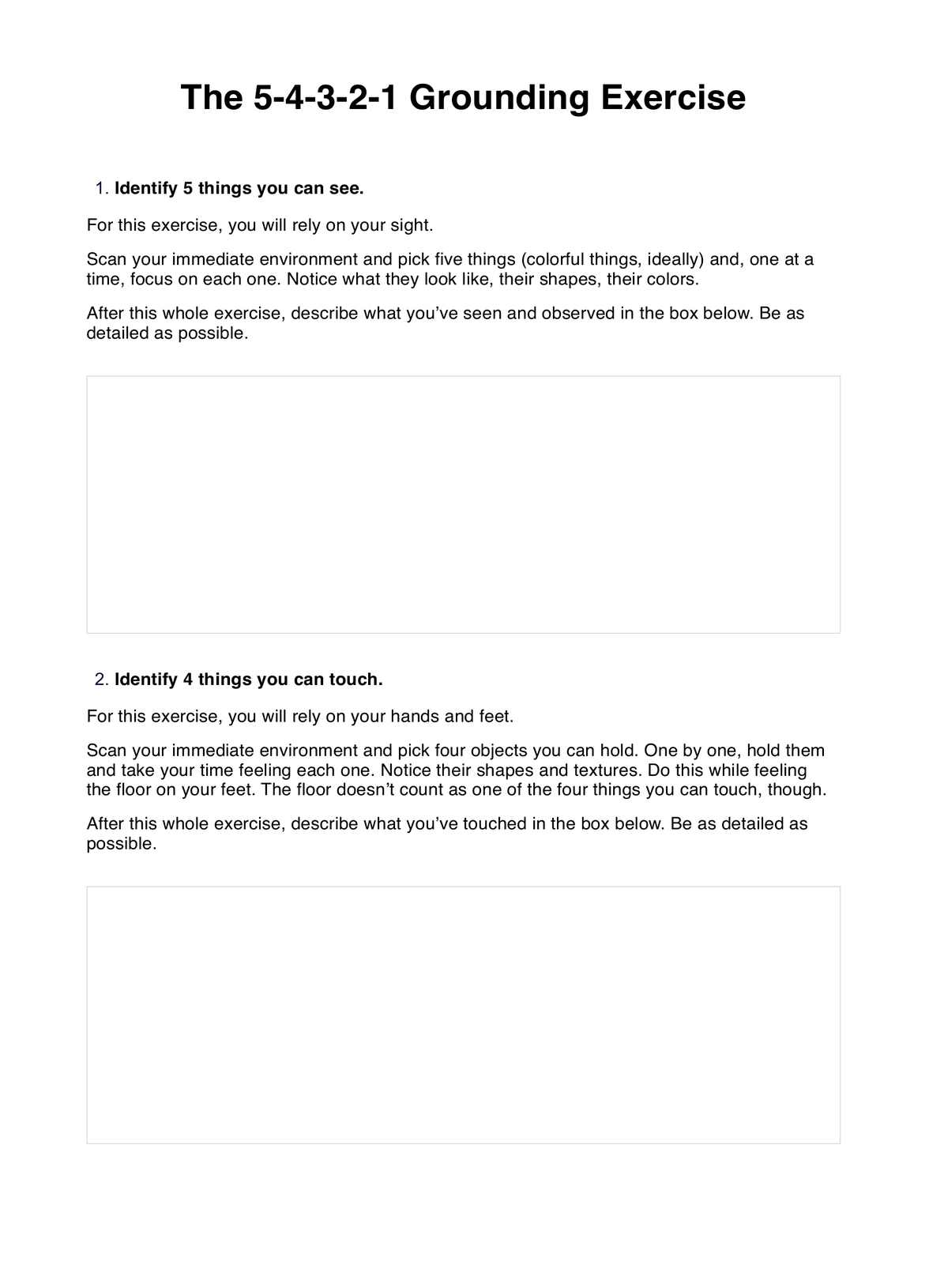It can be accomplished within 10 minutes, but you can if you want to practice the exercise longer.

5-4-3-2-1 Grounding PDF
Learn about the 5-4-3-2-1 grounding technique and use our 5 4 3 2 1 Grounding PDF handout whenever you practice it.
5-4-3-2-1 Grounding PDF Template
Commonly asked questions
No. While this technique can be effective, it might not work for others. Other people don’t rely on this technique and instead practice other techniques like deep breathing because it works for them more than this. It’s best to try different techniques and see which suits you best.
Yes. If you practice it routinely, you’ll eventually become more in tune with your emotions and can control them, especially when you’re distressed. The 5-4-3-2-1 grounding technique is a healthy coping skill.
EHR and practice management software
Get started for free
*No credit card required
Free
$0/usd
Unlimited clients
Telehealth
1GB of storage
Client portal text
Automated billing and online payments











